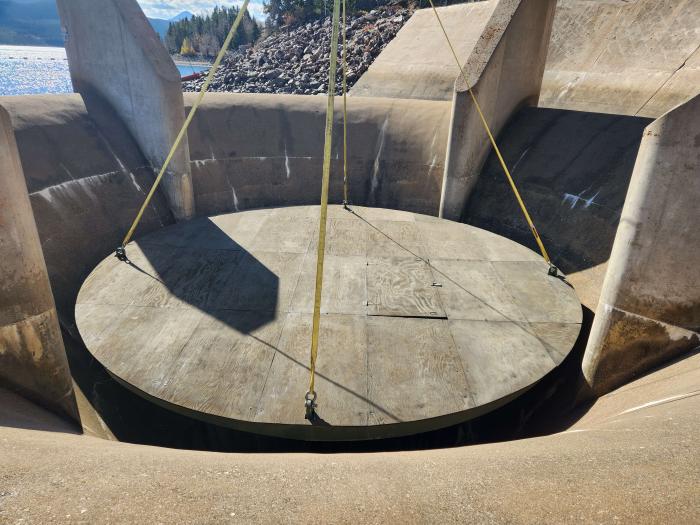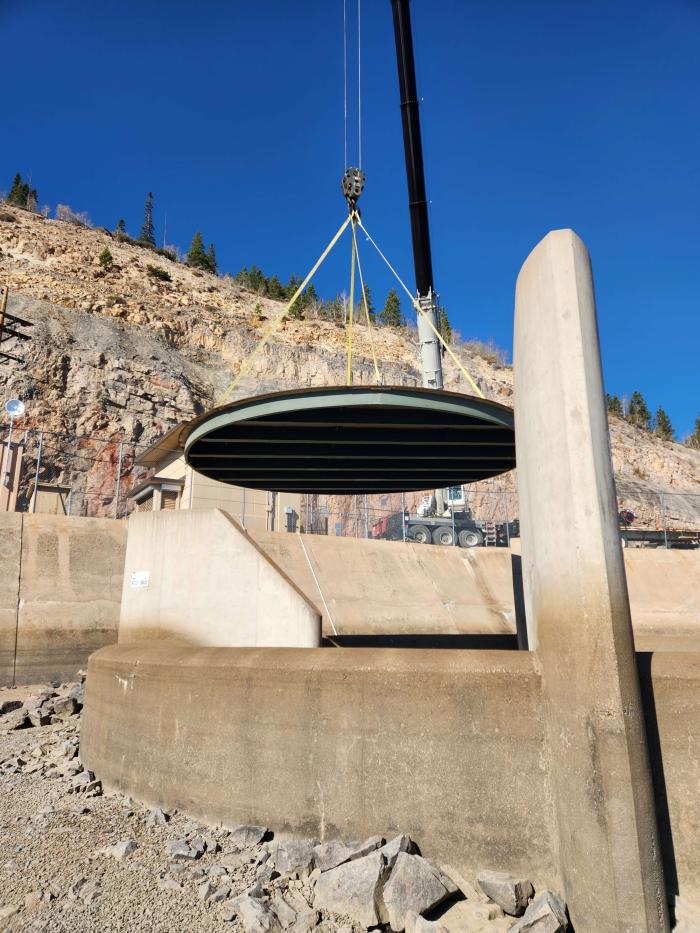A sure sign of winter: Closing up the Morning Glory spillway
Editor's note: This story was originally published in fall 2017 and has been updated in fall 2024 to include new photos and to reflect current conditions.
How do you keep debris and cold temperatures from damaging a giant spillway that measures 15 feet in diameter and features a more than 200-foot drop?
Get a really big plug.
Every fall, Denver Water crews place a 6-ton steel plug into the Morning Glory spillway at Dillon Reservoir. The annual activity marks the end of summer and signals the start of winter maintenance season, when Dillon Dam’s operators focus on maintenance of the structure’s interior facilities.
The plug serves a primary and secondary function. First, it prevents cold air from entering the spillway, which could damage the outlet works and take hours of manual labor to melt the ice that builds up. Secondly, the plug also helps prevent chunks of ice and snow from falling into the spillway and crashing more than 200 feet below.
Exact timing of the operation varies from year to year, though the rule of thumb is to do it when the reservoir’s water level is at least 4 feet below the crest of the spillway.
“That way, we have time to get back in here and remove the plug should we get sudden, unexpected inflows,” said Rick Geise, hydropower operator at Dillon Reservoir, one of the Denver Water employees who lives and work at the dam year round.
In 2024, plug placement happened in the middle of October.
The cap was placed using a mobile crane provided and crewed by Terry’s Crane and Rigging out of Salida, Colorado; the company has provided this service to Denver Water for more than 20 years. Geise and fellow hydropower operator Ben Morgan assisted, overseen by hydropower supervisor Mason Dixon and Dillon Dam manager Ryan Rayfield.
Come early spring, the crew will be back again to pull the plug, signaling the start of the summer maintenance season, when the focus turns to other projects to keep the facility in tip-top condition.
The Morning Glory spillway is one of four ways water leaves Dillon Reservoir: evaporation, absorption, through the Roberts Tunnel, and out through the dam's outlet works to the Blue River. The outlet works facility, commissioned in 1964, includes the spillway and a 15-foot horizontal slide gate.
This large gate is the primary barrier between the reservoir and another set of four smaller gates that serve as the final control point before water is released into the Blue River at the base of the dam. Denver Water manages outflows by adjusting these gates. When the reservoir is full, water flows into the Morning Glory spillway out to the Blue River.




